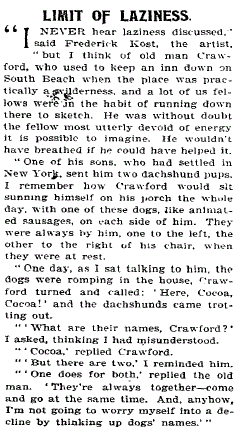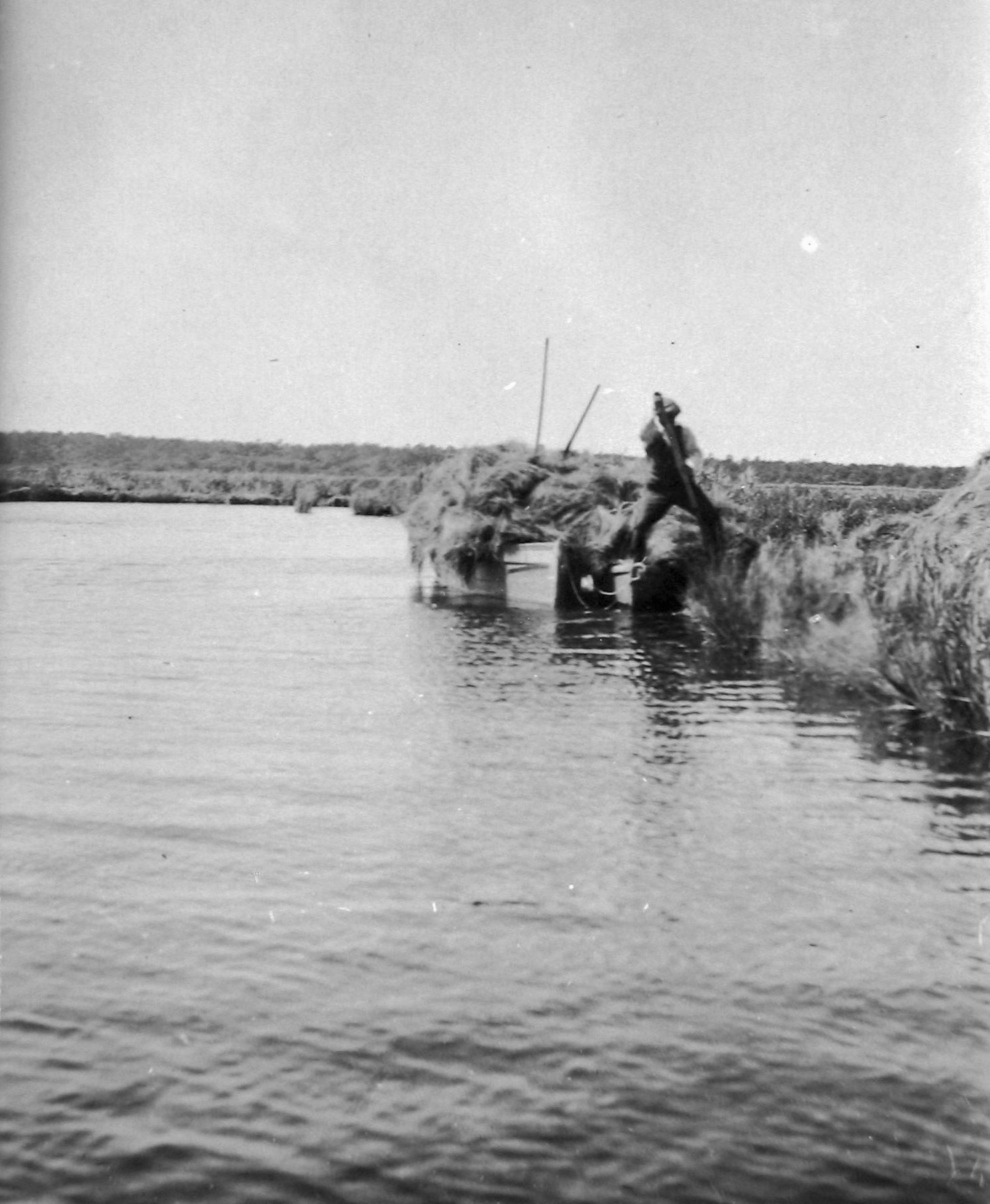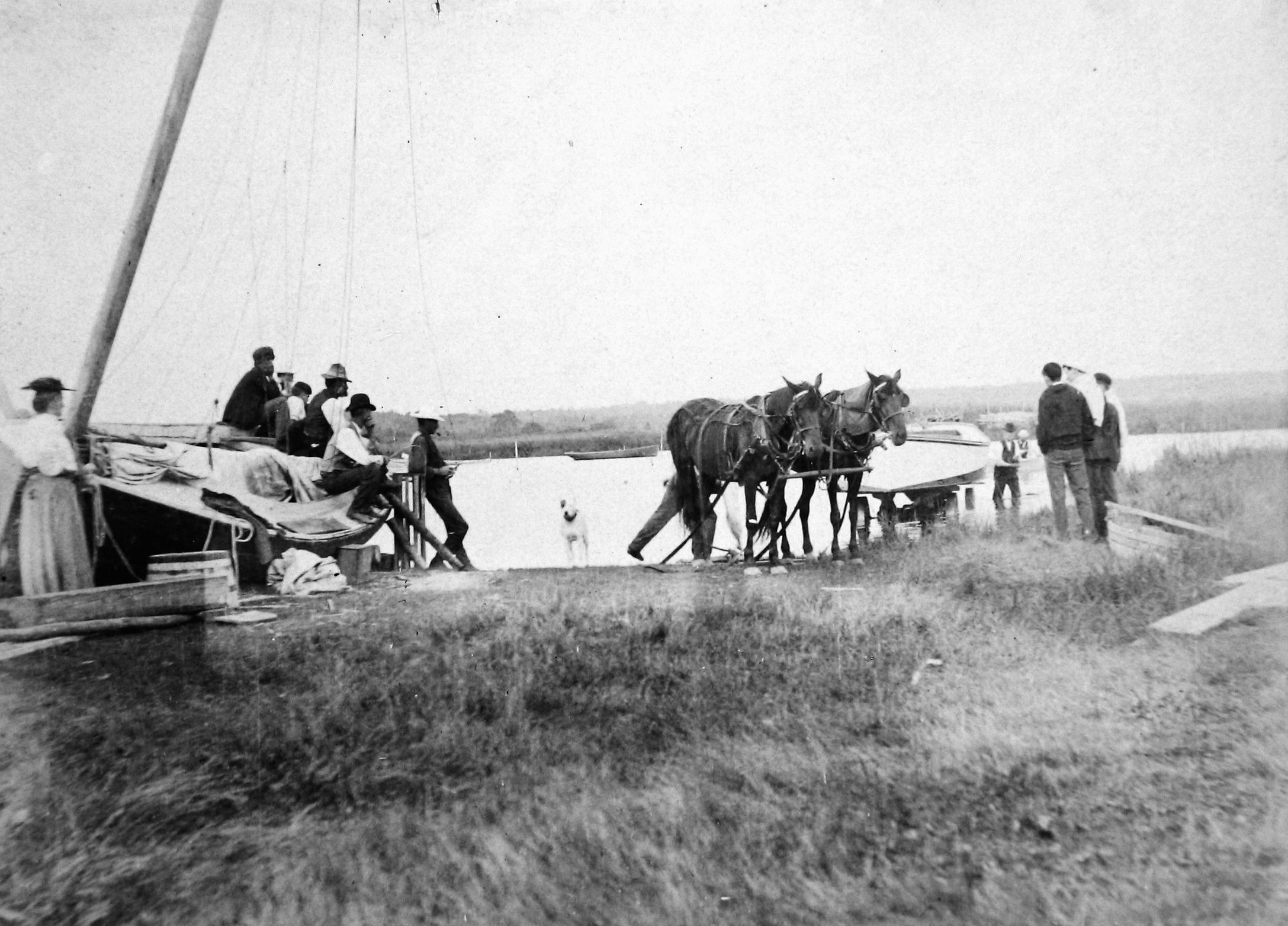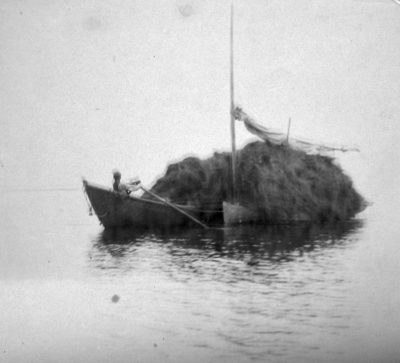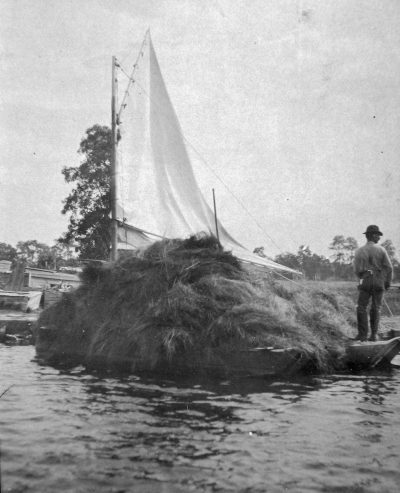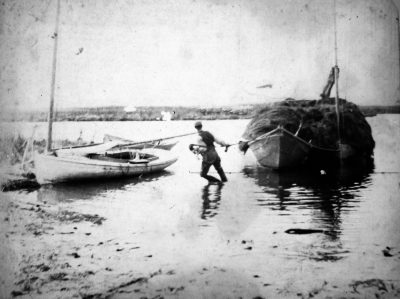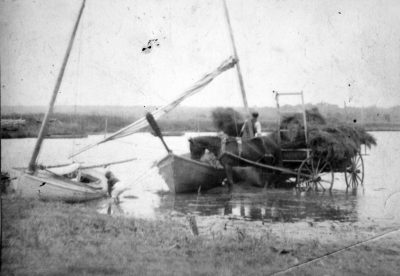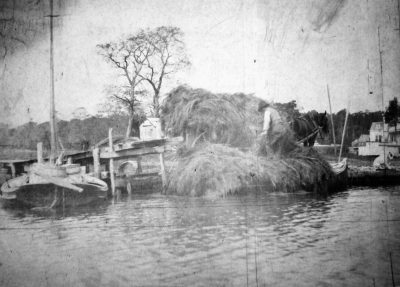Frederick W. Kost
Frederick W. Kost (1861-1923) was a landscape and impressionist painter at the turn of the 20th century. He was a resident of Brookhaven Hamlet and lived in the Deacon Daniel Hawkins House [Historic Structure ID 24B].
He also took many photographs of scenes in Brookhaven Hamlet, a collection of which may be found in the Post-Morrow Foundation archives, including some of his original glass plates.
Salt Haying
Among Kost’s photographs are pictures documenting the harvesting of salt hay within Brookhaven Hamlet. While these pictures are from around the turn of the 20th century, the work was likely little different from the harvesting done from the 17th century onward. The harvesting of salt hay was also the subject of several of Kost’s Paintings.
Salt hay was the principal natural resource which lead to the initial settlement of Fire Place by the early Setauket farmers in the 17th century. Salt hay grows naturally in the marshes along the ocean bays of New England and Long Island. It was highly valued by the early farmers as a supplement to “English” hay, in that it required no cultivation or clearing of land. This hay also was shipped to markets, such as the Bushwick Hay Market in Brooklyn, and sold as packing material, insulation for ice, fodder, bedding for cattle, and mulch for crops.
On 10 June 1664, residents of the original Brookhaven Town settlement at Setauket purchased a large tract of land from the native Americans which became known as Old Purchase at South, which included the area of Brookhaven Hamlet. A portion of this purchase was quickly divided into valuable “meadow shares” extending from the Great South Bay north to where the more forested upland region began (essentially to where Beaver Dam Road is now). The evidence of these original shares can still be seen in the general north-south alignment of properties in aerial views of the Hamlet. (The less valuable upland shares were divided later.)
The original prints of some of the photographs below were not of very good quality. They have been enhanced by adjusting the contrast, minor cropping, and converted to grayscale. Overall. they give a good overview of haying. One is dated 1906, which is likely the date for all. Kost purchased his Brookhaven home in 1906.
Wallace Swezey, seen in these photographs, was an ice dealer and had at least one ice house in Brookhaven Hamlet. The hay being harvested here was likely to be used for insulation in the ice houses.
He harvested the ice from several fresh water ponds in the Hamlet.
Another resource on salt hay, if you can find it, is:
Townsend, Charles Wendell. Sand dunes and salt marshes.
Boston, Dana Estes & Company, publishers, [1913].

